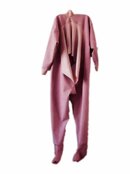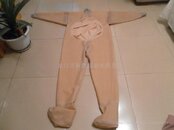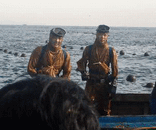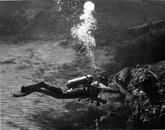Oh, I am going to have a little fun with this...

before you mock, this is a Chinese dry suit, and the guy I talked to claims that they actually DIVE in these things... in their regular clothing (stocking feet of course), and they go down to 10 meters in some places. It's airless, so only some ambient bouyancy, and it won't provide much insulation... but it might be cool to try out...
Now I recognize if it leaks, I'm water logged, that's what a good dive knife can resolve...
But has anyone ever seen one of these?
I've been talking with a tec diving instructor at our LDS, and he says we could have a go in the pool, and walk to the deep end from the shallow end... if the test drive works, then we could play with it a little on a local trip...
Now you can shoot me, but be gentle.

before you mock, this is a Chinese dry suit, and the guy I talked to claims that they actually DIVE in these things... in their regular clothing (stocking feet of course), and they go down to 10 meters in some places. It's airless, so only some ambient bouyancy, and it won't provide much insulation... but it might be cool to try out...
Now I recognize if it leaks, I'm water logged, that's what a good dive knife can resolve...
But has anyone ever seen one of these?
I've been talking with a tec diving instructor at our LDS, and he says we could have a go in the pool, and walk to the deep end from the shallow end... if the test drive works, then we could play with it a little on a local trip...
Now you can shoot me, but be gentle.








